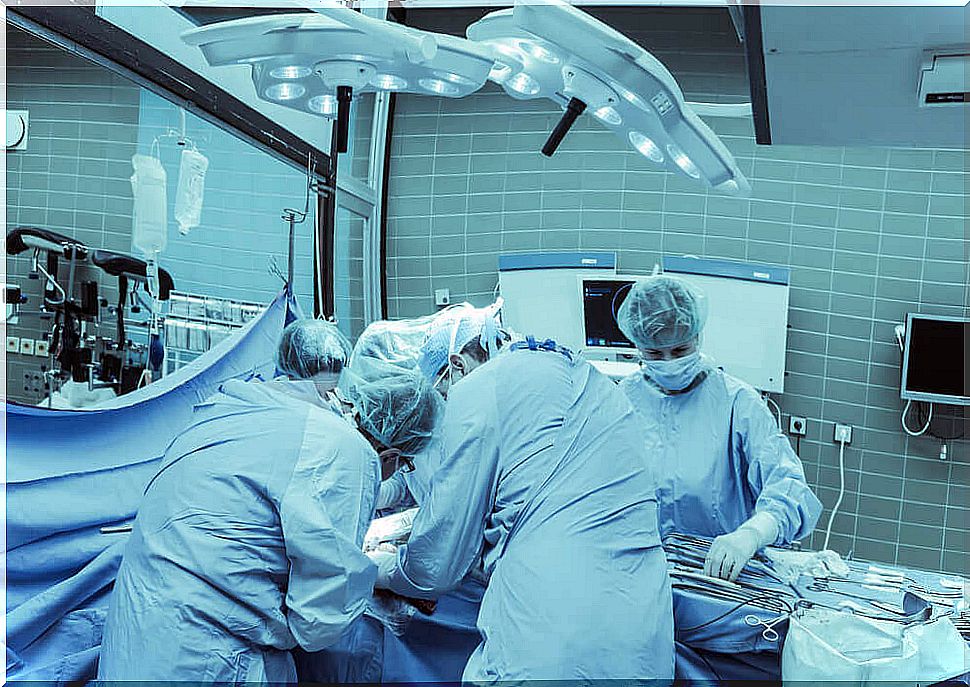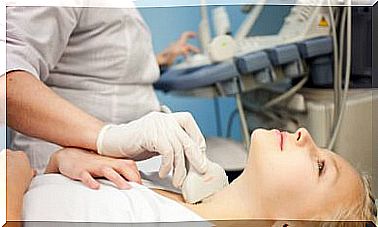Boerhaave Syndrome Or Perforation Of The Esophagus
Boerhaave syndrome is the most serious cause of esophageal perforation, presenting a very high mortality rate. An esophageal perforation consists of the development of a hole in the esophagus originated by different reasons.
The main cause is usually a therapeutic endoscopy, followed by spontaneous perforations.
It is the most serious and life-threatening of all digestive system perforations. The mortality rate ranges between 15-25% in cases treated within 24 hours of the onset of the condition and 40-50% if treated afterwards.
Boerhaave syndrome, also known as spontaneous esophageal perforation or postatemic esophageal rupture, is therefore one of the ways in which this serious problem can occur.
Reasons for Boerhaave syndrome
The main reasons why Boerhaave Syndrome can occur are the following:
- Sudden increase in abdominal pressure during vomiting or childbirth.
- Seizures or cough
- Prolonged laughter.
In 90% of cases, the left posterolateral esophageal wall ruptures about two to three centimeters from the gastroesophageal junction.
Symptoms of esophageal perforation
The symptoms of Boerhaave syndrome are the so-called Mackler’s triad, which consists of:
- Vomiting
- Chest pain
- Subcutaneous emphysema
However, this combination of symptoms is not always easily identifiable. It can be difficult to diagnose patients who present them.
The essential differential diagnosis is made with other cardiorespiratory disorders such as:
- Pericarditis (inflammation of the pericardium, the membrane that lines the heart)
- Myocardial infarction
- Spontaneous pneumothorax
- Pneumonia
Lack of a typical presentation and a decompensated patient are responsible for misdiagnosis and delays in treatment.
Diagnostic tests
In most patients, the initial imaging procedure to diagnose Boerhaave Syndrome is a chest x-ray.
However, studies with water-soluble contrast have been more accurate regarding perforations of the lower esophagus. For this reason, they are highly recommended to confirm the diagnosis.
It is worth mentioning that false negative results are usually reported in 10-66% of Boerhaave Syndrome patients.
Confusion may arise in interpretation. This is because collections of contrast substance in the submucosal plane indicate a contained rupture. In these cases, treatment is delayed, which can have dire consequences for patients.
Thanks to advances in technologies, CT scan with oral contrast has become more popular revealing really useful findings. The most important findings have been:
- Per-esophageal or para-aortic air collections
- Contrast-free filtration outside the esophagus
- Pneumomediastinum
- Pneumothorax
Furthermore, in certain patients, a combination of diagnostic techniques is necessary for the diagnosis of Boerhaave syndrome .
Boerhaave syndrome treatment

It has been the rarity of the problem that has prevented experience with the management of a large number of patients from being gained.
Nonsurgical approaches, such as covered stent treatments, are only applicable in very specific situations.
Most authors recommend immediate surgery in cases of Boerhaave Syndrome.
In most cases it is agreed that the goals of treatments focused on Boerhaave syndrome are:
- First, the prevention of increased runoff from drilling.
- Next, the elimination of the infection.
- Debridement of devitalized and washed tissue.
- Finally, extensive drainage of the infected mediastinum and pleura.
Intrathoracic complications are those that carry the greatest risk for patients with Boerhaave syndrome.
It is important to bear in mind that nutrition, as well as intensive care and radiographic support are elements of great importance in specialized centers for the management of these patients.
Likewise, the size and location of the perforation stand out as determining factors for an effective recovery of the patient. Also age, contamination of the mediastinum and pleural cavities.
It must always be borne in mind that surgical treatment is controversial. The time elapsed from the onset of the condition to diagnosis is one of the decisive factors when it comes to avoiding the highest percentage of risks possible.









